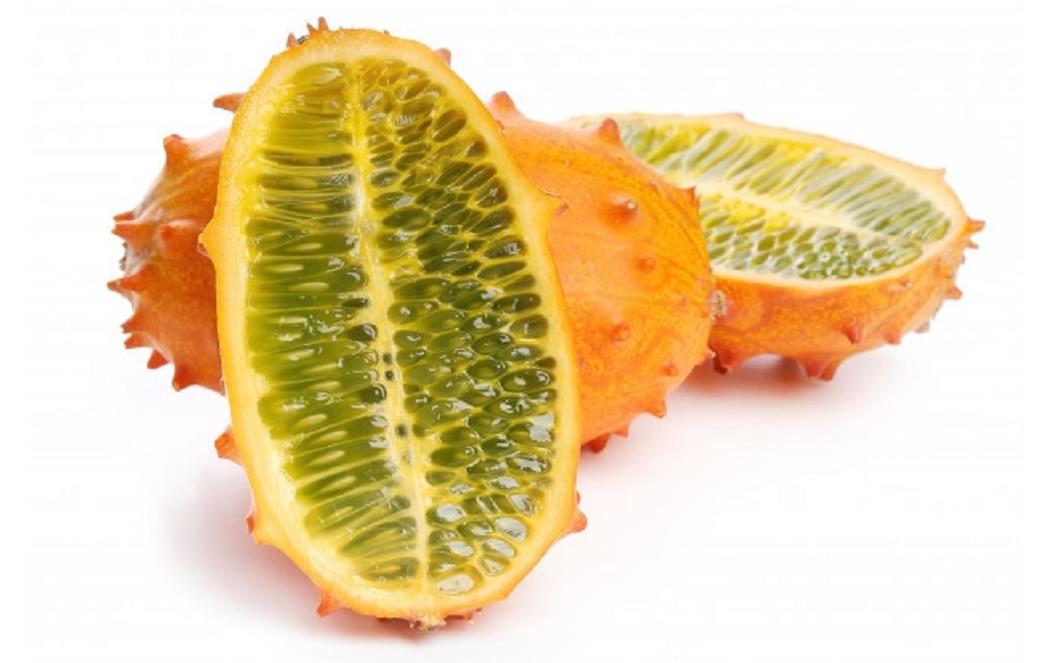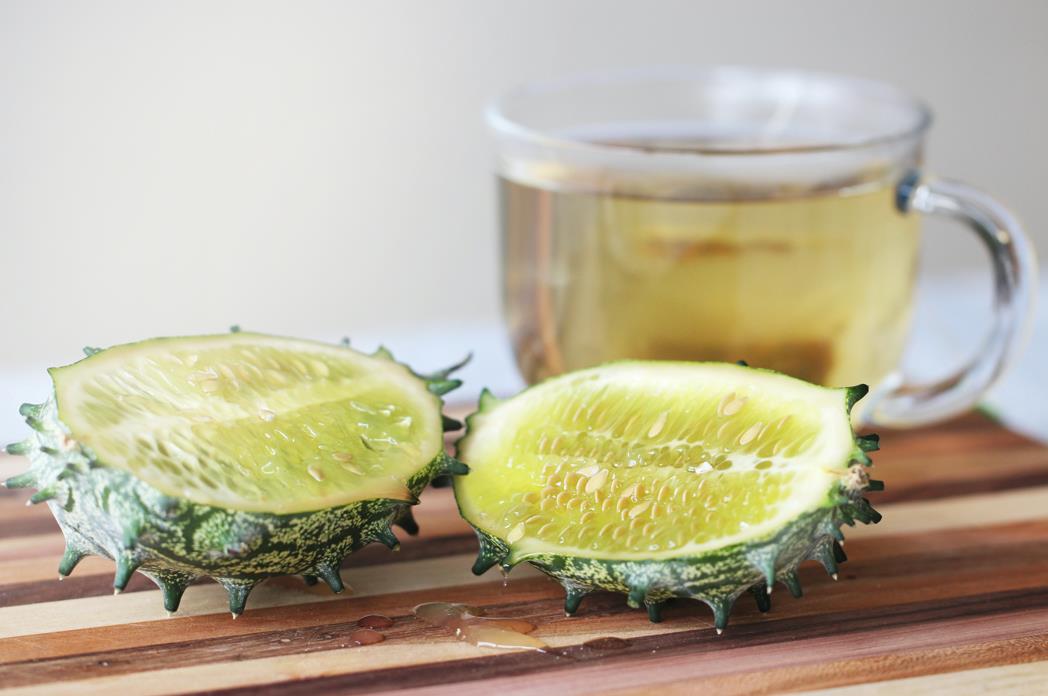Horned melons are peculiar-looking, exotic fruits that you may or may not have heard of. These interesting fruits have a bitter-sweet tang to them and are characterized by spiked yellow exteriors and gooey green insides.
If you love cucumbers, kiwis, bananas, and even zucchinis, you might as well try this orange spiky fruit that will give you a refreshing taste of the three. Before you begin eating a horned melon, however, you must learn how to cut a horned melon first.
Here are the simplified steps of cutting a horned melon:
- Pick and rinse the kiwano horned melon.
- Use a sharp knife to cut it in half, at the equator.
- For scooping out seeds, cut lengthwise instead.
- Use a spoon to scoop the seeds out.
The orange spiky fruit may look intimidating, but is a no-brainer when it comes to cutting and eating it. Learn how to cut and eat a horned melon by reading on.
Table of contents
What is a kiwano horned melon?

The kiwano fruit is known by many names such as the horned melon, jelly melon, blowfish fruit, African horned cucumber, spiked melon, etc. It is an annual fruit vine that is native to Africa and belongs to the cucumber and melon family.
If you look at a kiwano, you will find the exterior to be an oval-shaped, orange rind with spikes or horns on them. The inside contains a gelatinous yellowish to lime green flesh that contains a horde of edible seeds. The kiwano horned melon is a popular fruit snack in many parts of the U.S., Africa, Australia and New Zealand.
How to cut a horned melon
We know. The spine covered orange rind of a kiwano melon looks daunting. Rest assured, the process of cutting is not. Before getting to the cutting part, let us first learn how to distinguish whether a kiwano melon is ripe:
How to know if a kiwano melon is ripe
Check the exterior: Another factor you must look out for when picking a ripe kiwano is to assess the exterior. Make sure that the kiwano has an orange rind with most of the orange spikes on them intact. Also, there must be no bruises or soft spots on them.
Do the squeeze test: The next test to assess whether your fruit is ripe or not is to do the squeeze test. A kiwano melon that is ripe will slightly give in when squeezed instead of feeling rock solid. A kiwano melon that doesn’t give in when squeezed is unripe and not ready to eat.
Preparation
Tools needed
- A sharp utility or paring knife
- A cutting board
- A vegetable peeler
- A spoon
Handpicked for you
True cutting power in the palm of your hand
Washing the kiwano
- Fill up your sink with cold water.
- Soak the kiwano melons for a few minutes.
- Remove from the sink and pat dry.
Trimming the horns
Once your kiwano melon is washed, the next thing you need to do is trim the horns or spikes on it:
- Place the kiwano melon on the cutting board.
- Use your dominant hand to hold the vegetable peeler.
- Use your non-dominant hand to keep the kiwano melon in place.
- Trim off the spikes with the peeler.
Cutting the kiwano melon
- Place the trimmed kiwano melon onto the cutting board.
- Next, use a sharp knife to cut the kiwano melon into two halves, preferably at the equator.
- Scoop out the seeds and flesh with a spoon or squeezing by hand.
How to eat a kiwano melon raw
- Follow the above steps to cut the kiwano melon into two halves.
- Hold the kiwano melon half in your hands and bring it to your mouth.
- Squeeze the kiwano from the lower side.
- The pulp will come up at the surface where you can suck it.
- If you don’t want the seeds to come through, simply suck the kiwano fruit sac through your teeth at the bottom and top whilst holding the seeds outside the teeth.
- You can also use a spoon to scoop out the pulp and devour it.
Health benefits of kiwano melon

The kiwano melon is a very nutritious fruit that is rich in Vitamin C, iron and potassium. Read on to see why you should include this fruit in your diet:
Promotes healthy RBC production
About 13% of your daily iron needs can be fulfilled by including a kiwano melon in your diet. This supply of dietary iron is important for production of healthy red blood cells, which in turn ensure that the proper amount of oxygen is regulated inside the body.
In order to improve the absorption rate of iron, adequate amounts of Vitamin C must be present. Coincidentally, Vitamin C is also present in adequate amounts in the kiwano melon. Therefore, kiwano melon successfully promotes RBC production as well as transport of oxygen.
Promotes skin and bone health
There is adequate Vitamin C in the kiwano melon which in turn promotes the production of collagen. Furthermore, collagen helps in aspects such as wound healing, protection from the sun, as well as general promotion of healthy skin.
Moreover, vitamin C, along with magnesium and zinc, promote bone health.
Apart from the above benefits, the kiwano melon is also known for strengthening immunity, promotion of heart health, blood sugar control, amongst many others.
FAQS of horned melon
Is the skin of kiwano melon edible?
Yes, the skin of the kiwano melon is perfectly edible. While it is safe to eat the skin of the kiwano melon, most people just prefer to eat the inside flesh only. Be careful though, the skin is leathery and the horns could hurt you.
How do you eat a kiwano melon?
You can eat the kiwano melon raw. Alternatively, you can use it in a fruit salad, as a garnish, and even kiwano salsa. Strain out the seeds to include it in exotic cocktails, drinks and even desserts.
How do you store a kiwano melon?
Kiwano melons that are ripe must be consumed within a few days. Store these melons at room temperature and do not refrigerate. You can also scoop out the pulp from the rind and store it in an airtight container. The pulp can be stored in the freezer for up to three months.
In conclusion
By now, you must really be looking forward to eating this peculiarly interesting kiwano melon. So what are you waiting for? Grab a sharp knife and eat away!












